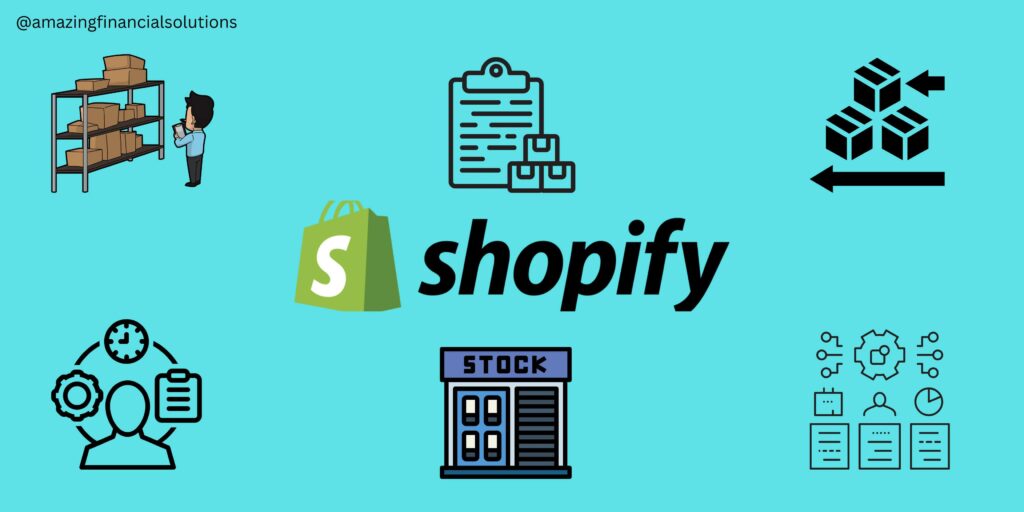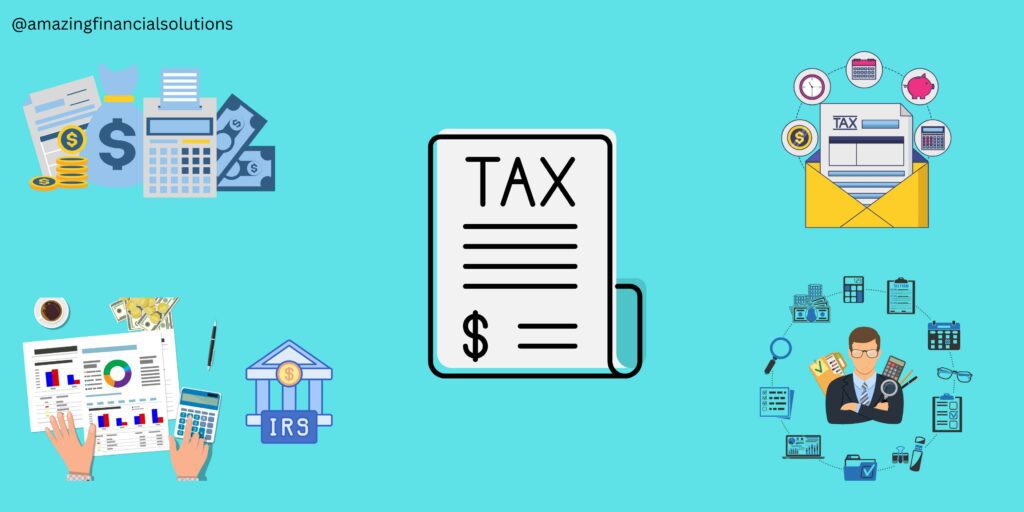
Do I really need to track accurate inventory in my Shopify business and does the IRS or state tax agency really care?
Tracking the inventory is one of the most important tasks in any e-commerce business. Tracking the inventory means monitoring the raw material and the finished goods of the business and how they move through the supply chain. In simple words, it is the monitoring of the inventory any business owns. Tracking the inventory is as important in your Shopify businesses just as the big retail stores. Tracking the inventory of your Shopify store helps you stay informed about the inventory levels, delivery statuses, and location of each of your products in your warehouse. At Financial Solutions, we specialize in Shopify bookkeeping services, help you prepare and file your business tax returns, and guide you in your financial and investment decisions to increase your business profitability.

Tracking the inventory of your Shopify store is important for filing your taxes. The IRS or State agencies charge tax on earnings before interest and taxes (EBT). EBT is calculated by subtracting COGS, general and administrative expenses, and interest from the total revenue. As discussed earlier, COGS can be calculated only by tracking the inventory. If your tracking system is not good, you may have to suffer losses by paying more taxes, or IRS may charge you a penalty for not keeping an accurate record of the inventory. To better understand the complexities surrounding Sales tax, and the locations of your business and the locations of your warehouses, please check out our Shopify guide to sales tax.
What are the things that need to be tracked in your Shopify store?
Tracking the inventory includes the following:
- Cost of goods sold (COGS)
- Value of ending inventory
- Location of inventory
- Updated stock levels
- Inventory Accuracy
- Inventory turnover

- COGS
The cost of goods sold (COGS) is the total cost any business bears for manufacturing, storing, and handling the items it sells. When reviewing your financial statements, it is difficult to know if your business is profitable without knowing the COG. In order to calculate the COGS, the business has to start by taking the value of inventory at the beginning of the period it is currently trying to assess, then add the cost of any new inventory purchased over this period, and then finally subtracting the value of inventory held at the end of this period. This produces the COGS for the period the business was trying to assess.
- Value of ending inventory
Inventory valuation gives you the value of unsold inventory and is considered an asset in the balance sheet and will be the opening balance of your business in the coming year. Inventory valuation is also essential to find inventory turnover, which is defined as how often a company sells its goods. The turnover rate is a good indicator for the business to know if its goods are selling quickly or slowly.
- Location of inventory
Once stock enters your warehouse, it moves around as it is sorted and graded, categorized, and then retrieved and delivered to the next supply chain. As your inventory keeps moving in the warehouse, keeping an accurate record of its location in the supply chain is important to track and dispatch the ordered products in time.
- Updated stock levels
Having updated stock levels lets you know how much inventory you possess at a specific time or period. It’s important to keep your stock levels updated in your Shopify business. If you fail to keep updated stock levels, you will not have enough items to fulfill an order, and you will have to furnish a refund to your customers since the ordered items are not in stock.
- Inventory Accuracy
Inventory accuracy is the ratio between the inventory that has been tracked or recorded and the actual inventory that a business possesses. It’s the key performance indicator if the ratio is not the same. This could indicate theft, weakness of internal controls, or miscalculations made during tracking or shocking your inventor. This can ultimately affect the profitability of the business. Inventory accuracy is essential for your business processes to function smoothly.
- Inventory turnover
Inventory turnover is the rate at which the inventory stock is sold. Higher inventory turnover indicates stronger sales, while lower ones tend to lower sales. For your Shopify business, you have to track inventory turnover to make better decisions about the future of your business.
Why is it important to track inventory?
Tracking inventory for your Shopify business store is essential for your business to succeed. Below are some reasons why tracking your inventory is crucial to ensure success in your Shopify business:
- Avoiding Shortages
Updated stock levels help your business avoid any kind of inventory shortage. With an accurate count of what you have, you can also know what you don’t have and replenish your stock in time. According to a survey by Peoplevox, 34% of orders are delayed by businesses because of inventory shortages.
- Inventory Forecasting
Tracking the inventory will help you forecast your future inventory needs. Having an accurate stock count will help you make sound inventory purchasing decisions. With accurate inventory forecasting, you can address the question as to whether it is prudent to purchase new inventory or not, and if yes, then how additional inventory is actually needed. These questions are addressed through inventory tracking.
- Location Tracking
Shopify businesses that store items in multiple storage locations or warehouses may have a difficult time tracking all of their inventory at once. Many inventory tracking applications give you access to all the information to help you, the Shopify business owner, manage and track the complexity of storing your inventory at multiple locations and will save you time to focus on your other business needs.
- Error Detection
Inventory tracking helps you identify the errors or potential problems in your Shopify business. Tracking the inventory gives you information about the increase/decrease in sales and expenses, which helps you identify and rectify the issue timely.
- Theft/ Miscalculation Protection
Tracking your inventory can prove to be a very strong internal control against any theft, miscalculation, or error in the goods or inventory received from your supplier.
- Improve Customer Service
For your Shopify business, it is essential to have a good inventory tracking system to use Shopify’s e-commerce automation, Shopify Flow. This system can immediately inform customers whether the item they are ordering is currently in stock. This system also lets the potential buyer know the status of the product he/she is ordering, improving the overall customer sales experience.
- Decrease Expenses
Failure to track inventory ultimately causes delays in the delivery of your orders. Doing this for one or two customers may not be a big deal for your Shopify store, but the continuous delivery delays will negatively affect your sales. If your inventory is not accurately tracked, you may needlessly purchase additional inventory to fulfill your orders, which will increase your expenses as the new items you ordered were already present in your warehouse but were left untracked. Hence, tracking inventory will help you decrease the expenses of your Shopify store.
Inventory Management
Inventory management is important to ensure that your Shopify business can easily look at your current inventory and see how much more inventory you need to order and when to order. Having good, solid inventory management systems in place allows you, the Shopify business owner track your inventory from the time it is purchased from a supplier / vendor to the time it is sold to your customer. Having an inventory management system in place also enables you to responds to the current market trends to ensure there’s always adequate inventory to fulfill customer orders and adequate warning if there your inventory is running low. There are three methods for inventory management. These are:
- FIFO
- LIFO
- Weighted average method

These methods affect the taxes and the profitability of your firm. The methods are discussed below:
- FIFO
As the name suggests, the items that are brought first are sold first. The inventory is recorded at historical cost in COGS. The FIFO method decreases the cost of goods sold as the items brought in first are generally cheaper than the later ones. Decreased COGS increases the EBT, and on higher EBT, IRS will charge you higher tax that will decrease your profitability.
- LIFO
LIFO stands for Last In First Out. It means that the items brought into the warehouse of your Shopify store, at last, are to be sold first. The items brought at last are generally more expensive than the first ones. Hence, it will increase the COGS and ultimately decrease the taxable income.
- Weighted Average Method
In it, all units are valued at a weighted average cost per unit, and it applies this calculated average to the COGS in addition to the units held in ending inventory.
If you want to know more about these methods in detail check our blog on 3 Major Inventory Valuation Techniques for a Shopify Business.
We hope this blog helps you, the Shopify business owner note that tracking inventory is one of the most important tasks in managing your Shopify business. Tracking the inventory not only helps your business grow, but it will also helps you at tax time to ensure that you have accurate data. Although inventory tracking sounds like a simple and easy task, it can be quite difficult when more products are involved or you don’t have a bookkeeping expert. If you want to know more about Shopify check out our blogs on many other interesting topics relating to Shopify. Our firm can help you with setting up the software for inventory tracking and give you financial advice about your Shopify store and make your business more profitable.
You Shopify we Bookify!! ®

Thank you for providing precise and actionable steps for implementation.